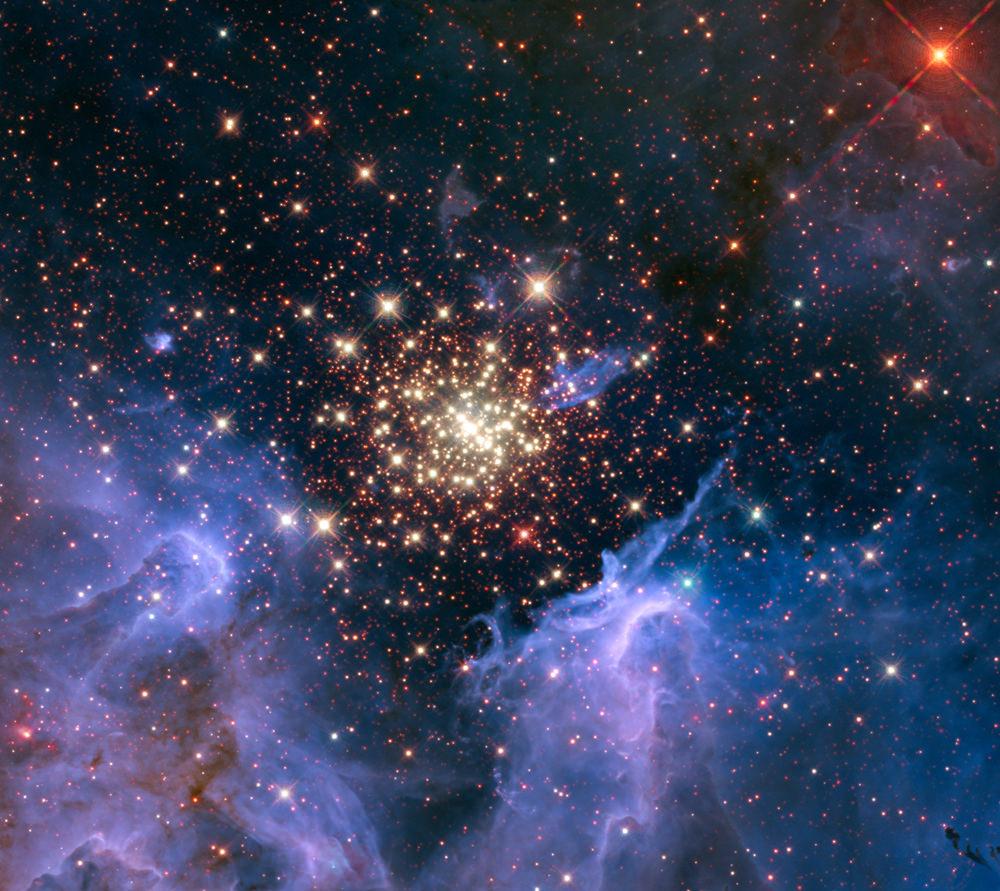[/caption]
Hovering about the galactic plane and locked in the embrace of a spiral galaxy’s arms, open star clusters usually contain up to a few hundred members and generally span around thirty light years across. Most are young, up to a few tens of millions of years old – with a few rare exceptions as old as a few billion years. We understand that over time the members of a galactic cluster slowly drift apart to form loose associations. But what we don’t understand is exactly how their stars formed.
“The net effect of this is that their stars eventually become redistributed throughout the Galaxy,” said Nathan Leigh, a PhD student at McMaster University and lead author for a study being presented this week at the CASCA 2011 meeting in Ontario, Canada. “This is how we think most of the stars in the Milky Way came to be found in their currently observed locations.”
One of the reasons we’re not able to probe deeply into the construction and evolution of galactic clusters is because they are typically hidden by a dense veil of gas and dust. Beautiful to look at… But nearly impossible to cut through in visible light. This means we can’t directly observe the process of starbirth. To help understand this process, astronomers have combined their observations of star clusters so old they date back to the beginning of the Universe itself . And, thanks to modern computing, they are also able to generate state-of-the-art simulations for stellar evolution.
“Unfortunately, most star clusters take so long to dissolve that we cannot actually see it happening. But we now understand how this process occurs, and we can look for its signatures by examining the current appearances of clusters,” said Nathan Leigh. “We have gone about this by matching up the clusters we make with our simulations to the ones we actually observe. This tells us about the conditions at the time of their formation.”
These simulations have given Leigh and collaborators the stimulus they needed to re-trace the histories of real star clusters, giving us new clues about formation. To complete their studies, they relied upon highly sophisticated observations recently taken with the Hubble Space Telescope.
“Remarkably, we are finding that all star clusters more or less share a common history, extending all the way back to their births,” said Leigh. “This came as a big surprise to us since it suggests that the problem could be much simpler than we originally thought. Our understanding of not only how stars form, but also the history of our Galaxy, just took a much bigger step forward than we were expecting.”
Source: Canadian Astronomical Society.


Tammy,
Typo in the image filename, not the caption, clsuter for cluster but good luck with the file name change.
Typo in the 3rd paragraph, shortly after the ellipsis … But nearly impossible to cut through in visible light. This means we are XXable (unable is what you might have intended here) to directly observe the process of starbirth.
If there are more I didn’t see them, someone else will have to play catcher for those.
Mary
hey, fiend and mary… i’m afraid i can’t quite fill nancy’s shoes. in this case, the ruby slippers mean i really do work at home and even a 20 minute distraction will totally throw you off your game. thanks for the insights and i hope i’ve fixed what i can!
Tammy,
Typo in the image filename, not the caption, clsuter for cluster but good luck with the file name change.
Typo in the 3rd paragraph, shortly after the ellipsis … But nearly impossible to cut through in visible light. This means we are XXable (unable is what you might have intended here) to directly observe the process of starbirth.
If there are more I didn’t see them, someone else will have to play catcher for those.
Mary
Hi Tammy!
Normally your articles are bang-on, but in this case the third paragraph seems a little disjointed! Not a criticism – just thought it might have slipped through late at night or something 🙂
Have a good one…
Tammy’s been burning the midnight oil lately! It is appreciated…. many thanks!